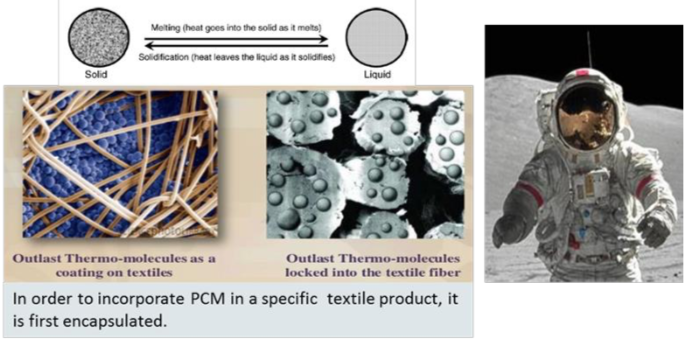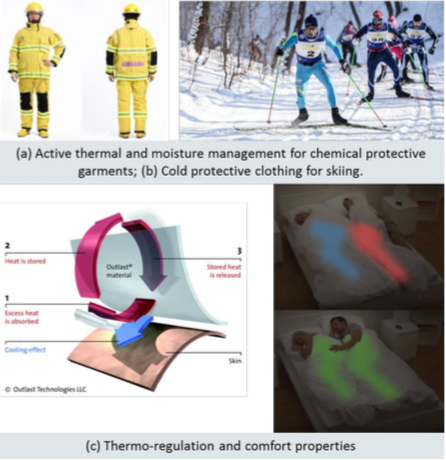“Phase Change” refers to physical state transformation – the process of changing from solid phase to liquid phase and vice versa1. To provide thermal protection for astronauts, the technology of Phase Change Materials (PCM) microcapsules into textile structure was developed in the early 1980s under a NASA research program2. Using PCM, smart fibers and textiles could have automatic acclimatizing properties, such as thermal energy storage and energy release of the cooling process3.
Besides, PCM has been also applied for thermal protection4 and regulation for sports5, personal protection6 and home textiles7, as shown in the following figures.
- Mondal, S., Phase change materials for smart textiles – An overview. Applied Thermal Engineering, 2008. 28(11–12): p. 1536-1550
- Nelson, G., Microencapsulation in textile finishing. Review of Progress in Coloration & Related Topics, 2008. 31(1): p. 57-64.
- Weder M., Scale of change, Textile Month, 2001. October: 37–38.
- Zhu, F., Feng, Q., Liu, R., Yu, B., & Zhou, Y. (2015). Enhancing the thermal protective performance of firefighters’ protective fabrics by incorporating phase change materials. Fibers and Textiles in Eastern Europe, 23(2), 68-73.
- http://news.xinhuanet.com/english/photo/2015-01/02/c_133892902.htm [14-06-2018]
- http://www.everychina.com/p-z52ed6f7-102417978-fire-department-nomex-fr-firefighter-uniform-flame-retardant-coveralls-with-nomex-iiia.html [14-06-2018]
- http://www.outlast.com/en/applications/ [14-06-2018]

